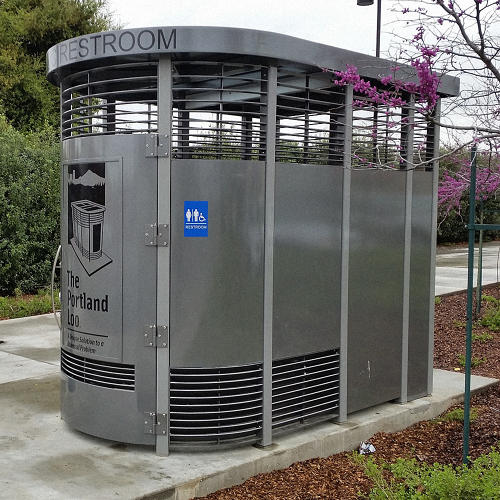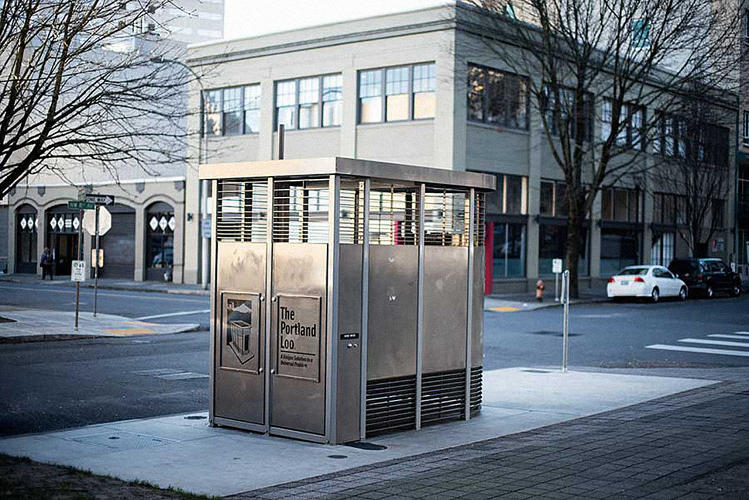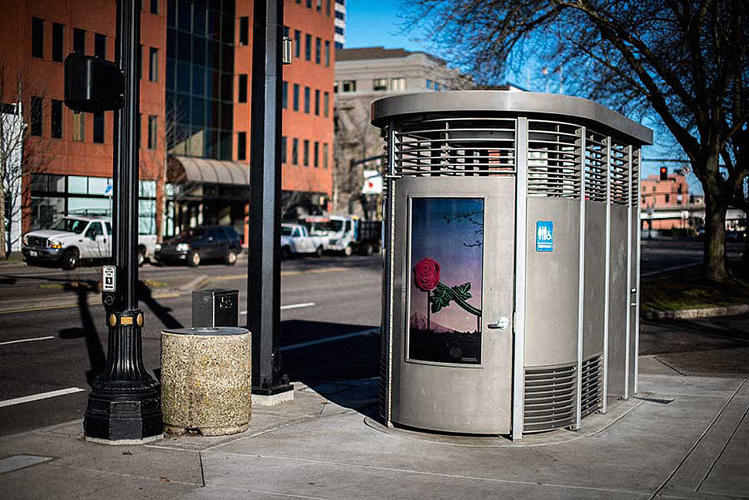The Ultimate Public Toilet Is As Low-Tech As It Gets
To look at, the Portland Loo doesn’t seem like much: a steel shell encasing a single silver toilet-bowl. There are grills at the side, allowing people to look in (not much privacy). And there’s no sink, mirror, or running water (just hand sanitizer). It doesn’t seem like the future of toilets, so much as a stripped down version of the past.
But, make no mistake, the Portland Loo is highly engineered. When it was developed in the Oregon city of Portland, the police, fire department, maintenance crews all gave their input, and the process cost close to $250,000. It was worth it, though. Increasingly, the Portland Loo is the potty of choice among American cities, many of which are fed with the hassles that go with more automated facilities.

“It was built by committee, which is the hardest way, but getting everyone’s input was important,” says Evan Madden, owner of the company that manufactures of the Loo. “It’s easily cleaned and maintained, and it prevents crime because people can’t hide out in it.”
The clearest example of toilet automation gone wrong is in Seattle. In 2004, it invested $5 million in five self-cleaning, auto-opening units. Then four years later it sold them on eBay, citing maintenance issues and crime problems. Someone bought them for just $12,549.
Now Seattle is one of more than a dozen cities with Portland Loos, along with San Diego, Cincinnati, Cambridge, Massachusetts, and others. There are 34 installed in all, and cities like Albuquerque, New Mexico, Austin, Texas, and Hoboken, New Jersey, have ordered them, at about $90,000 a pop.

The grills at the top are designed to let the police look if they suspect illegal activity. Madden says there’s a blind spot so people can’t be seen using the toilet (“We have this saying, ‘you can see your trunk, but not your junk,'” he says). The lighting is blue, which apparently stops heroin addicts from locating their veins and shooting up inside. The paint is the anti-graffiti variety. And the lack of water gets round the so-called “Hotel Effect,” whereby if offer running water, people will probably start doing their laundry (and stop other people from entering).
Madden reckons automated toilets are a nice idea, but practically a no-no. San Francisco is another city that has invested heavily in such designs, only to see them close regularly for maintenance and cleaning.
“You don’t want them to be too overcomplicated. It doesn’t work well when the public has too much opportunity to break such an expensive thing,” he says.
Have something to say about this article? You can email us and let us know. If it’s interesting and thoughtful, we may publish your response.
To look at, the Portland Loo doesn’t seem like much: a steel shell encasing a single silver toilet-bowl.

But, make no mistake, the Portland Loo is highly engineered.

Increasingly, the Portland Loo is the potty of choice among American cities, many of which are fed up with more automated facilities.

The grills at the top are designed to let the police look if they suspect illegal activity.

The lighting is blue, which apparently stops heroin addicts from locating their veins and shooting up inside. The paint is the anti-graffiti variety.

And the lack of water gets round the so-called “Hotel Effect,” whereby if offer running water, people will probably start doing their laundry.

Now Seattle is one of more than a dozen cities with Portland Loos, along with San Diego, Cincinnati, Cambridge, Massachusetts, and others.

Fast Company , Read Full Story
(22)









